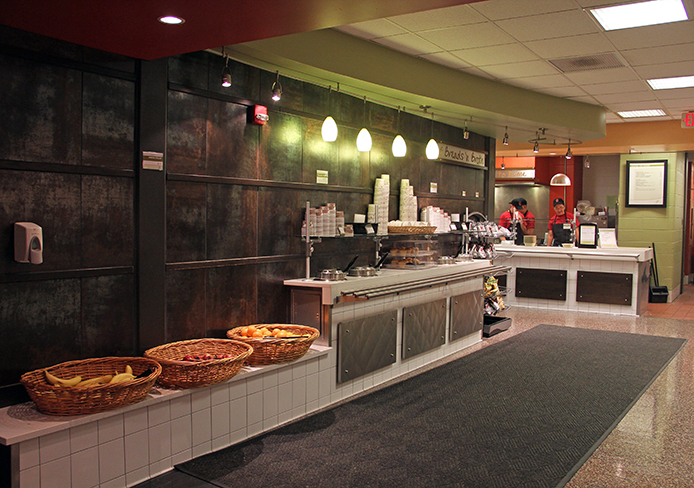It’s a classic scenario: Freshmen standing in line at the C-Store at the end of the semester, toting multiple packages of Coca-Cola and Powerade, stacks of Jeni’s ice cream and spending their meal plan on random people at the food courts, just to get through their blocks.
It seems so straightforward to spend all of one’s blocks, and yet it isn’t, because this scenario is as common as William Oxley Thompson Memorial Library filling up for finals week. It happens every semester, to every freshman.
I’ll give credit where it is due — the university tries to let students know when they are behind their blocks or over their blocks. I’ve received multiple emails informing me that I am far under the amount of blocks I should have spent by now. There is a list on the university’s website of how many blocks should be spent when. The estimate of how many blocks per day should get spent is on there too.
Yet every semester, it’s so common to hear students who have too many blocks or too few, and it’s the university’s fault.
All freshmen – with a few exceptions – are required to live on campus, and students are required to pay thousands of dollars for food if they live on campus. At the same time, during their first semester, students don’t know how much they are going to eat or how little. They don’t realize how many blocks it takes to eat at the Ohio Union all the time versus how many times they go to Chipotle every week.
What’s more, the blocks system and how we are supposed to spend it is confusing. Yeah, three or four blocks a day is helpful, but when do we spend four, and when do we spend three?
The chart on the dining website is supposed to help with that, but it is confusing too. It lists Monday’s date as the start of the week, with Sunday at its end, and how many blocks a student is supposed to have on Sunday, not on Monday.
So why not just list Sunday’s date and how many blocks you’re supposed to have that day, the way it is on the charts on the cash registers around campus? Those are a lot more straightforward. If you can make those, you can post them online, Student Life.
According to a statement released by email by Ohio State spokeswoman Amy Murray, “This number is in no way intended as a strict pattern to be followed, but instead offers a broad, general idea that may help students make their own informed decisions.”
But does that actually help? No. How do we not freak out when we learn that we have 50 more blocks than we should, or 40 fewer than we should? It still doesn’t help us pace ourselves properly.
It seems set up to confuse students and to hurt how they are going to spend their blocks. Yes, it’s more flexible. Yes, it’s probably the best offer for most students between a weekly blocks system, the unlimited system where the only food that can be purchased is from Traditions locations on campus, and the system discussed above.
But instead of only those three choices, the blocks system could be even more flexible and benefit students better. The way to give students more control over what they eat is to offer more options — a 250 plan, a 100 block plan, a 500 block plan. Let students update or lower their number of blocks up till the last three weeks of the semester.
Because let’s be honest, the cafeteria food here isn’t anywhere close to the best campus food. According to the Daily Meal, out of a list of 60 colleges, that honor goes to Bowdoin College in Brunswick, Maine. Ranking at No. 55 is Miami University in Oxford, Ohio, and OSU isn’t even on the list.
Um, hello OSU. Maybe you can learn something about making good food from Miami.
But if OSU isn’t willing to create food good enough that students want to eat it on a regular basis, they should create a system of blocks that works for any student. As it stands, the blocks system is flexible, but not exactly right for everyone. If the university cares about its students, it should, and can, reform the blocks system. Or just make better food students want to eat.



